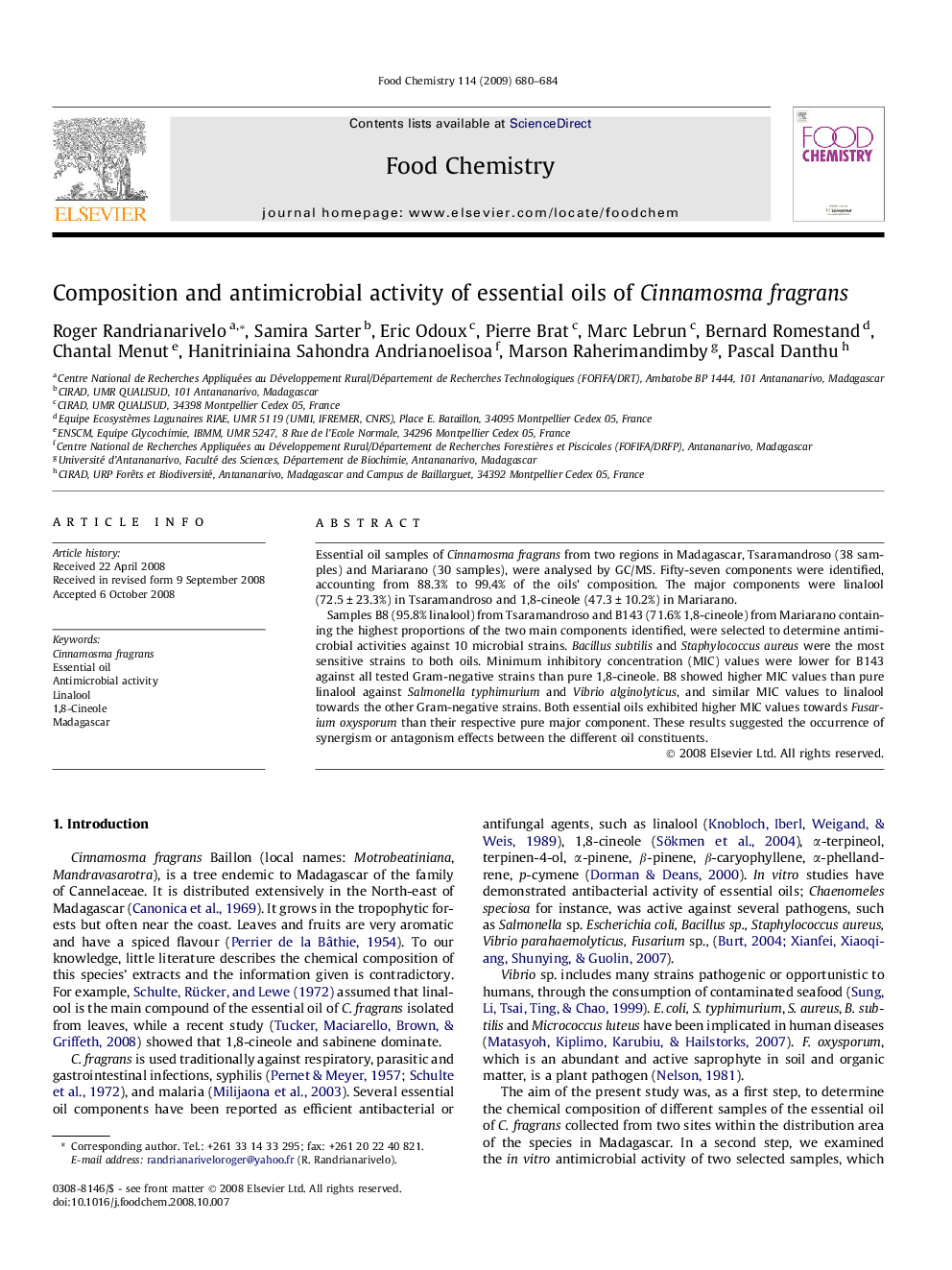| Article ID | Journal | Published Year | Pages | File Type |
|---|---|---|---|---|
| 1187599 | Food Chemistry | 2009 | 5 Pages |
Essential oil samples of Cinnamosma fragrans from two regions in Madagascar, Tsaramandroso (38 samples) and Mariarano (30 samples), were analysed by GC/MS. Fifty-seven components were identified, accounting from 88.3% to 99.4% of the oils’ composition. The major components were linalool (72.5 ± 23.3%) in Tsaramandroso and 1,8-cineole (47.3 ± 10.2%) in Mariarano.Samples B8 (95.8% linalool) from Tsaramandroso and B143 (71.6% 1,8-cineole) from Mariarano containing the highest proportions of the two main components identified, were selected to determine antimicrobial activities against 10 microbial strains. Bacillus subtilis and Staphylococcus aureus were the most sensitive strains to both oils. Minimum inhibitory concentration (MIC) values were lower for B143 against all tested Gram-negative strains than pure 1,8-cineole. B8 showed higher MIC values than pure linalool against Salmonella typhimurium and Vibrio alginolyticus, and similar MIC values to linalool towards the other Gram-negative strains. Both essential oils exhibited higher MIC values towards Fusarium oxysporum than their respective pure major component. These results suggested the occurrence of synergism or antagonism effects between the different oil constituents.
